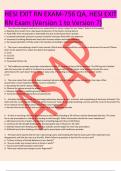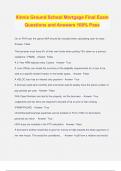Exam (elaborations)
HESI EXIT RN EXAM-756 QA, HESI EXIT RN Exam (Version 1 to Version 7)
- Course
- Institution
HESI EXIT RN EXAM-756 QA, HESI EXIT RN Exam (Version 1 to Version 7) 1. The pathophysiological mechanisms are responsible for ascites related to liver failure? (Select all that apply) a- Bleeding that results from a decreased production of the body’s clotting factors b- Fluid shifts from intr...
[Show more]




